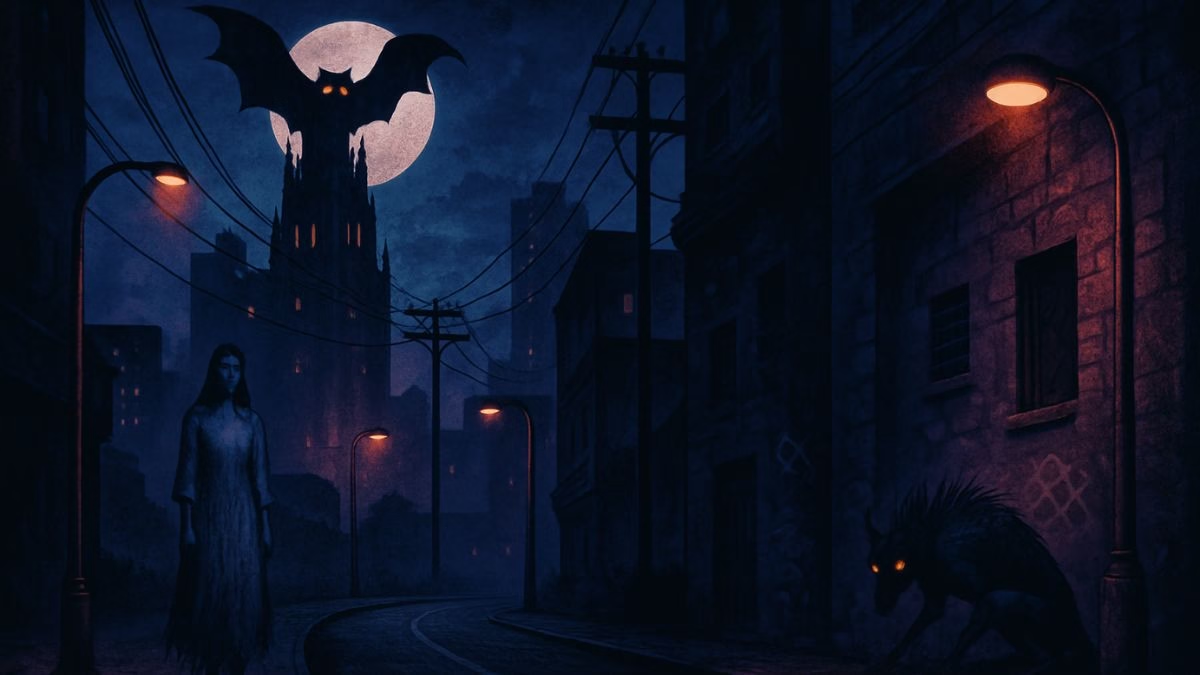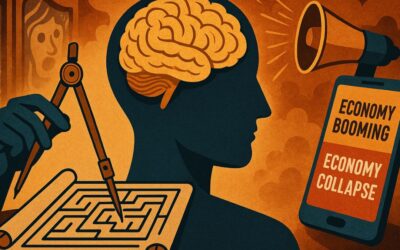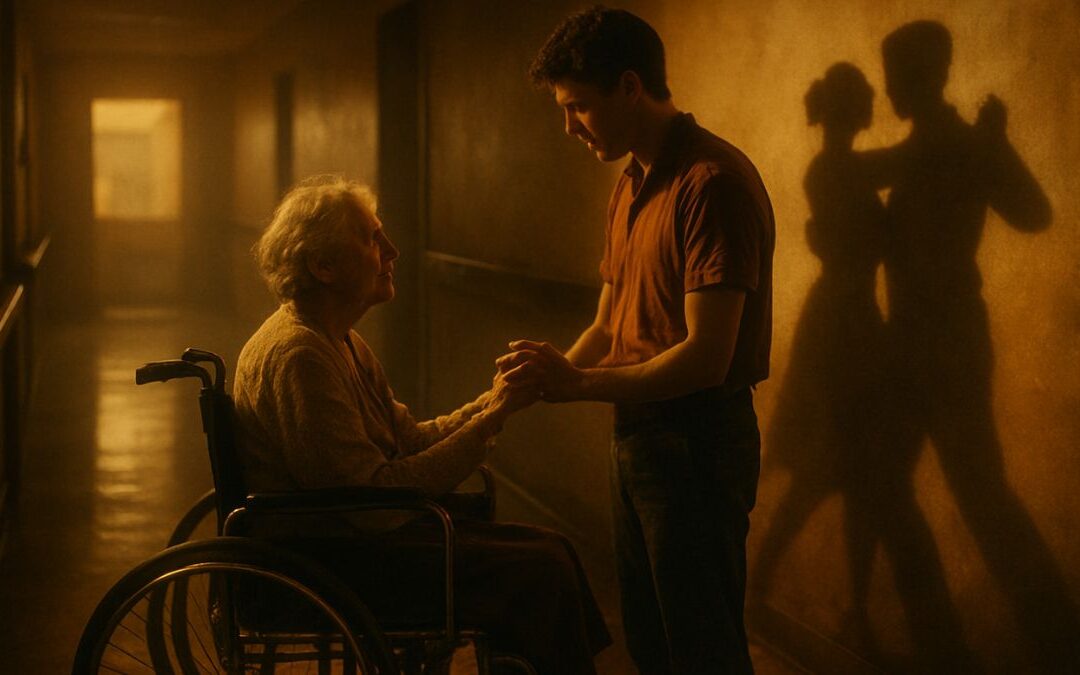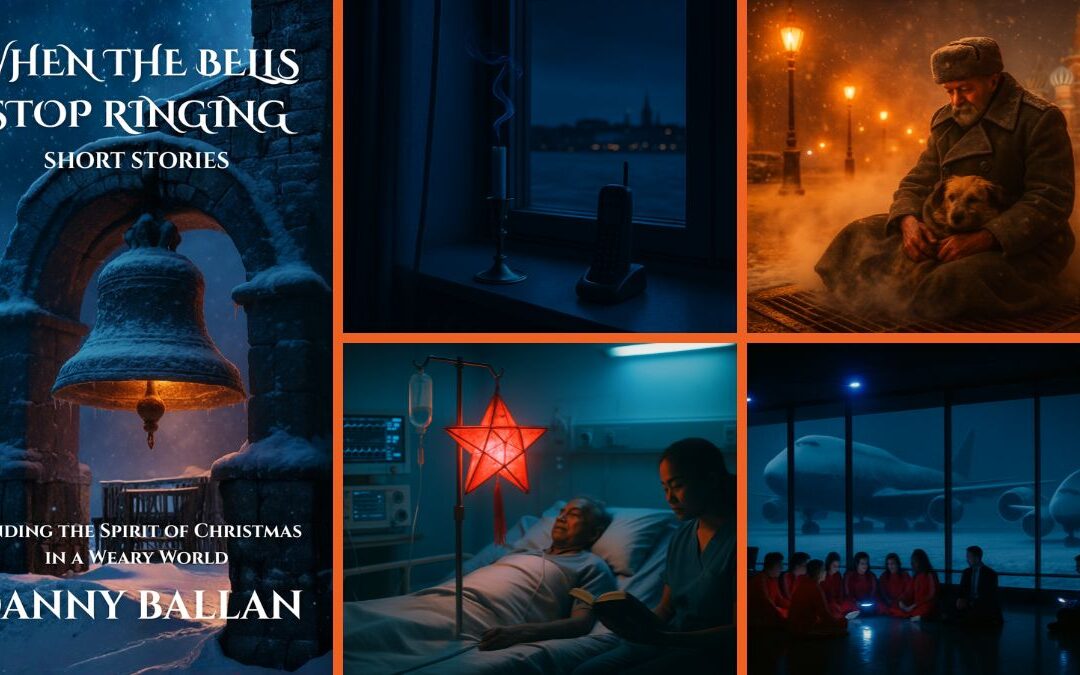Introduction
Have you ever heard a story that made the hairs on the back of your neck stand up? A story told to you by a friend, who swore it happened to their cousin’s roommate, or a colleague’s sister-in-law? A story so specific, so chillingly plausible, that it felt… real?
Maybe it was the one about the calls coming from inside the house. Or the unsettling tale of waking up in a bathtub full of ice, minus a kidney. Perhaps it’s a more modern variant, a digital ghost story whispered in the flickering glow of our phone screens—a warning about a sinister online challenge or a secret message hidden in a children’s cartoon.
These stories are the folklore of the modern age. We call them urban legends. They are the cautionary tales we tell ourselves, the monsters we create to explain a world that often feels chaotic and frightening. They’re sticky. They cling to our consciousness long after we hear them, mutating and evolving with each retelling, spreading like a virus through our social networks.
But why? What is the irresistible gravitational pull of a well-told, terrifyingly believable lie? In our new podcast series, Into the World of Urban Legends, we’re pulling back the curtain on these contemporary myths. And in our very first episode, “The Lure of the Legend: Why We Believe,” we’re tackling the biggest question of all: What makes a story stick?
This isn’t just about spooky campfire tales. This is a journey into the very architecture of the human mind. We’ll be asking the burning questions:
- Why are our brains, in this age of information and scientific reason, so remarkably susceptible to believing stories with no evidence? What are the cognitive shortcuts and mental glitches that make us vulnerable?
- What is the emotional cocktail that makes a legend so potent? Is it fear? Disgust? A twisted sense of curiosity? We’ll explore how these narratives are engineered to bypass our rational filters and hit us right in the gut.
- And what purpose do these stories serve? Are they just harmless fun, or do they function as a kind of social glue, transmitting our deepest cultural anxieties, our shared fears, and our unwritten rules of conduct from one generation to the next?
This episode is your primer on the psychology of belief, an exploration of how our own minds can be both our greatest asset and our most unreliable narrator. We’ll be venturing into the territory of cognitive biases, emotional reasoning, and the timeless, primal power of storytelling.
But be warned. This is just the first step. The world of urban legends is a sprawling, murky landscape, and a single episode can only illuminate a small corner of it. True understanding, the kind that inoculates you against misinformation and deepens your appreciation for the complexities of human culture, doesn’t come from a quick listen. It requires curiosity, critical thinking, and a willingness to dig deeper, to follow the breadcrumbs, and to do the reading. Consider this your map to the trailhead. The journey itself is up to you.
So, join us. Settle in, maybe leave a light on, as we begin our descent… into the world of urban legends.
Into the World of Urban Legends Episode 1: The Lure of the Legend: Why We Believe
Hello and welcome to the very first episode of Into the World of Urban Legends. I’m your host, and together, we’re about to embark on a journey into the shadowy corners of modern folklore, the stories we tell in hushed tones, the ones that always seem to have happened to a “friend of a friend.”
Let’s start with a classic. You’ve probably heard some version of it. A young couple is parked on a secluded lovers’ lane late at night. The radio is playing, the mood is just right. Suddenly, the music is interrupted by a news bulletin. A convicted killer, a maniac with a hook for a hand, has escaped from a nearby asylum. The description is terrifying. The girl gets spooked. She insists they leave immediately. The boy, frustrated but wanting to placate her, guns the engine and speeds off. When they get back to her house, he gets out to open her door, and then he freezes. There, dangling from the passenger side door handle, is a bloody hook.
Chilling, right? The story of “The Hook” has been terrifying teenagers for decades. It has every ingredient of a perfect urban legend: a relatable situation, a specific and terrifying threat, a suspenseful buildup, and that killer twist at the end. But here’s the thing: it never happened. There is not a single documented case of a hook-handed maniac menacing teenagers on lovers’ lane. And yet, the story persists. It survives.
That brings us to the central theme of today’s episode: Why? Why do these stories, completely untethered from reality, have such a tenacious grip on our collective imagination? What is it about our psychology, our culture, and our very wiring that makes us not only believe them but feel a compulsive urge to share them? This is the lure of the legend.
First, let’s get our definitions straight. An urban legend isn’t just any old rumor. It’s a narrative. It’s a story with a plot, characters, and often, a shocking or ironic climax. Folklorist Jan Harold Brunvand, who is basically the godfather of urban legend studies, calls them “modern folklore.” Unlike traditional folklore, which might involve magical creatures in ancient forests, urban legends are set in our world. They happen in shopping malls, on college campuses, in the backseats of cars. They reflect modern anxieties. And crucially, they are always presented as true, vouched for by a supposedly reliable, albeit distant, source—that infamous “friend of a friend.”
So, if they aren’t true, why do they feel so true? The answer lies not in the stories themselves, but inside our own heads. Our brains are incredible machines, but they’re not perfect. They’re built for efficiency, not for constant, rigorous fact-checking. To navigate a complex world, we rely on mental shortcuts, what psychologists call heuristics. And it’s these very shortcuts that urban legends exploit so brilliantly.
Let’s talk about one of the biggest culprits: the availability heuristic. This is a fancy term for a simple concept: if you can think of an example of something easily, you assume it must be common and true. Our brains equate the vividness and emotional impact of a memory with its frequency. Think about the perennial legend of poisoned Halloween candy or people putting razor blades in apples. Every year, these stories resurface, causing waves of panic. The number of actual, verified cases of strangers randomly poisoning Halloween treats is practically zero. So why does the fear persist? Because the story is terrifying. The image of a child being harmed in such a treacherous way is so emotionally potent, so available to our imagination, that it feels more probable than it is. The story is sticky because the fear it generates is immediate and visceral. We don’t remember the statistics; we remember the chilling image of a razor blade hidden inside a shiny red apple.
Then there’s the equally powerful confirmation bias. This is our brain’s tendency to favor information that confirms what we already believe. We’re all the heroes of our own story, and we like to be right. So, if we hear a story that aligns with our existing worldview or fears, we’re far more likely to accept it without question. For example, if you’re already vaguely suspicious of foreign food or a certain fast-food chain, a story about someone finding a rat in their bucket of fried chicken doesn’t just sound plausible; it sounds like a validation of your instincts. You’re not looking for evidence to debunk it; you’re looking for the story to fit into your pre-existing mental framework. The legend doesn’t create the belief; it reinforces it. And when we share it, we’re not just sharing a story; we’re sharing a piece of our own worldview, seeking validation from others who believe the same thing.
But it’s not all about these cold, cognitive mechanics. We aren’t robots. The true power of an urban legend lies in its emotional core. A dry list of facts will be forgotten by lunchtime, but a story that makes you feel something—fear, disgust, anger, even a dark sense of humor—that story will stay with you. Urban legends are masterclasses in emotional manipulation.
Take the emotion of disgust. It’s one of our most primitive, hardwired survival instincts, designed to keep us away from contamination and disease. Many urban legends tap directly into this. You have the stories of spiders laying eggs in a person’s skin after a tropical vacation, or the famous legend of the “Kentucky Fried Rat.” These stories aren’t just scary; they’re revolting. They make our skin crawl. That powerful, visceral reaction makes the story incredibly memorable and shareable. When you hear it, your first impulse is to warn others, to spread the feeling of disgust almost as a way of expelling it from yourself. “Can you believe this? How disgusting!” It’s a powerful social transaction.
Fear, of course, is the undisputed champion. Many of the most enduring legends are essentially cautionary tales dressed up in horror movie clothes. “The Babysitter and the Man Upstairs” isn’t just a scary story; it’s a warning about stranger danger and the sanctity of the home. “The Hook” is a warning about the dangers of youthful passion and isolated places. These stories give a face and a narrative to our abstract fears. It’s easier to be afraid of a specific maniac with a hook than it is to be afraid of the general concept of random violence. The story gives us a tangible threat to focus on, and in a strange way, a set of rules to follow: don’t park on lovers’ lane, always check the children, lock your doors.
This brings us to the final, and perhaps most important, piece of the puzzle: the social function of these legends. We are storytelling animals. It’s how we make sense of the world, how we build communities, and how we transmit our values. Urban legends are, in essence, the modern-day equivalent of fables or parables.
They serve as a vehicle for transmitting cultural norms and anxieties. Think about the legends that have emerged in the digital age. Stories about people being stalked through their social media check-ins, or laptops with webcams being used to spy on people in their own homes. These aren’t just spooky tech tales; they reflect a very real, collective anxiety about the loss of privacy in an increasingly connected world. The legend crystallizes that anxiety into a simple, shareable narrative. It’s a way for society to collectively say, “Be careful. The new world has new dangers.”
Sharing these stories also builds and reinforces social bonds. When you tell someone an urban legend, you’re creating a momentary “us.” You’re both in on the secret, sharing a shiver of fear or a gasp of shock. It creates a small, fleeting community. In an office, it might be a story about a bizarre corporate policy at a rival company. On campus, it might be a story about the ghost that haunts a particular dorm. These stories define the group and its shared knowledge, its shared fears. They say, “This is what we, in this group, know and worry about.”
Furthermore, these legends often carry a moral at their core, a kind of poetic justice. The person who is victimized in an urban legend is often someone who has transgressed some social norm. The teenagers on lovers’ lane were being promiscuous. The person who gets their kidney stolen was often lured by the promise of a hedonistic night with a stranger. There’s an undercurrent of “they had it coming.” This isn’t necessarily nice, but it’s psychologically comforting. It imposes a moral order on a chaotic world. It suggests that if you just follow the rules—don’t talk to strangers, don’t be too promiscuous, be wary of new things—you’ll be safe. It’s a false sense of security, but a comforting one nonetheless.
So, when we look at why we believe, we find a perfect storm of psychology and sociology. Our brains are primed to accept them because of cognitive shortcuts like the availability heuristic and confirmation bias. The stories themselves are engineered to stick by targeting our most potent emotions like fear and disgust. And we are compelled to share them because they help us make sense of our fears, enforce social norms, and build community bonds.
An urban legend is never just a story. It’s a mirror. It reflects our hopes, our prejudices, our fears, and our anxieties. The hook-handed killer isn’t just a monster; he’s a manifestation of our fear of the unknown, of the violence that can erupt without warning. The poisoned candy isn’t just a threat; it’s a symbol of a world where even the most innocent of pleasures can be corrupted.
Understanding the lure of the legend isn’t about debunking every story you hear. It’s about developing a new kind of literacy. It’s about learning to recognize the narrative tricks, the emotional hooks, and the psychological triggers. It’s about asking not “Did this really happen?” but “Why is this story being told? What does it say about us?”
Because in the end, the most fascinating character in any urban legend isn’t the victim or the monster. It’s us. The teller and the listener. The believer and the sharer. We are the ones who breathe life into these tales, who keep them alive around the digital campfires of the 21st century. And understanding why we do that is to understand a fundamental part of what it means to be human.
Next time on Into the World of Urban Legends, we’ll take a look at some of the most famous legends and trace their lineage, showing how these stories mutate and adapt over time, from the back of a horse-drawn carriage to the depths of the internet.
(Outro music begins to fade in)
Thanks for listening. Until next time, be skeptical, but stay curious.
Focus on Language Section
Vocabulary and Speaking
Alright, welcome to the language focus segment of the show. This is where we take a magnifying glass to some of the words and phrases we used in the episode. The goal isn’t just to memorize definitions but to really get a feel for how these words live and breathe in conversation. We want to equip you with the language to discuss these ideas with nuance and confidence. This is about elevating your vocabulary, making your expression richer and more precise.
Let’s start with a great word we used to describe why legends feel so true: credence. I said, “Why do these stories, completely untethered from reality, have such a tenacious grip?” You could also ask, “Why do people give credence to these stories?” Credence, C-R-E-D-E-N-C-E, is a noun that means the belief in or acceptance of something as true. It’s a bit more formal than just “belief.” You don’t just have credence, you give credence to something. Think of it like you’re handing over your belief. For example, if your friend tells you a wild story about seeing a celebrity at the grocery store, you might say, “I don’t give much credence to his stories; he tends to exaggerate.” Or in a more serious context, a detective might say, “The new evidence lends credence to the suspect’s alibi.” It suggests that a belief is being formed based on some, perhaps flimsy, evidence or feeling.
Next up, we have heuristic. I mentioned the “availability heuristic” and called it a mental shortcut. That’s exactly what it is. A heuristic, H-E-U-R-I-S-T-I-C, is a practical approach to problem-solving or learning that isn’t guaranteed to be optimal or perfect, but is sufficient for the immediate goals. It’s a rule of thumb. We use heuristics all the time without realizing it. If you’re looking for cereal in a new supermarket, you don’t check every single aisle. Your heuristic is to look for the “Breakfast Foods” sign. It’s a shortcut that usually works. The availability heuristic is a specific type, where our brain’s shortcut is “if I can think of it easily, it must be important.” The word itself is often used in psychology, computer science, and design, but it’s great for any situation where you’re talking about practical, imperfect strategies. You could say, “My heuristic for choosing a restaurant in a new city is to look for one that’s busy with locals.”
Now for a word that hits you right in the gut: visceral. I said the fear a legend generates is “immediate and visceral.” Visceral, V-I-S-C-E-R-A-L, means relating to deep inward feelings rather than to the intellect. It comes from the Latin word “viscera,” which refers to your internal organs. So a visceral reaction is a gut reaction. It’s not something you think about; it’s something you feel instinctively and deeply. A horror movie’s jump scare produces a visceral jolt of fear. The smell of your grandmother’s baking might trigger a visceral feeling of comfort and nostalgia. You could say, “His speech didn’t have a lot of facts, but it had a visceral appeal to the crowd’s anger.” It’s a fantastic word for describing powerful, non-intellectual emotional responses.
We talked a lot about legends being cautionary tales. This is a great phrase. A cautionary tale is a story that gives a warning. The whole point of the narrative is to illustrate the potential dangers of a certain action or behavior. The story of “The Boy Who Cried Wolf” is a classic cautionary tale about the dangers of lying. The legend of “The Hook” is a cautionary tale about parking in isolated places. It’s a phrase you can use all the time. If a friend’s business failed because he didn’t do enough market research, you could say, “His story is a cautionary tale for any aspiring entrepreneur.” It frames a negative event as a valuable lesson for others.
Let’s look at a verb: perpetuate. The Halloween candy legend is perpetuated by the media every year. To perpetuate, P-E-R-P-E-T-U-A-T-E, means to make something—typically an undesirable situation or an unfounded belief—continue indefinitely. It has a slightly negative connotation, suggesting that the thing being continued shouldn’t be. For example, “Stereotypes are often perpetuated by movies and television.” Or, “He feels that the new law will only perpetuate the cycle of poverty.” You don’t usually perpetuate good things, like peace or happiness. You perpetuate myths, stereotypes, conflicts, or problems.
Here’s another word with a negative flavor: insidious. I could have described the spread of some legends as insidious. Insidious, I-N-S-I-D-I-O-U-S, means proceeding in a gradual, subtle way, but with harmful effects. It’s like a poison that works slowly and you don’t notice it until it’s too late. It’s not a big, obvious threat; it’s a creeping one. For example, “Procrastination is an insidious habit; it starts small but can eventually derail your entire life.” Or, “The disease is insidious, showing no symptoms for years.” When you talk about the insidious spread of misinformation, you’re highlighting how it subtly infiltrates our thinking without us even realizing it’s happening.
A more positive and active word we used is debunk. I said the goal isn’t just to debunk every story. To debunk, D-E-B-U-N-K, means to expose the falseness or hollowness of a myth, idea, or belief. It’s what shows like MythBusters do for a living. They take a popular belief and test it to see if it’s true. So you can debunk the myth that you only use 10% of your brain. You can debunk a conspiracy theory by presenting factual evidence. It’s a strong, active verb. “The journalist’s investigation successfully debunked the politician’s claims.”
Let’s move to resonate. A story or an idea resonates with you if it seems important or meaningful to you, if it evokes a feeling of shared experience. It’s like a guitar string vibrating in sympathy with another. I could say that urban legends resonate because they tap into our deepest fears. The word implies a deep, personal connection. You might say, “I didn’t agree with everything in the book, but the central message about perseverance really resonated with me.” It’s much more powerful than saying “I liked it.” It suggests an emotional and intellectual harmony.
We often hear that urban legends contain a grain of truth. This is a fantastic idiom. A grain of truth is a very small amount of truth or accuracy in a statement that is otherwise false. That tiny bit of truth is what makes the whole story feel more believable. The legend about alligators in the sewers of New York might be based on a few isolated, real-life cases of people abandoning exotic pets. That’s the grain of truth that allows the larger, more fantastical myth to grow. You can use this in many contexts: “His excuse was wild, but there was a grain of truth to it—he really did get a flat tire.”
Finally, let’s talk about plausible deniability. This is more of a concept, but it’s a crucial part of what makes legends work. Plausible deniability is the condition in which a person or organization can deny knowledge of or responsibility for something because there is a lack of evidence to confirm their participation, even if they were secretly involved or aware. In urban legends, the “friend of a friend” structure provides plausible deniability for the storyteller. They can say, “Hey, I’m not saying I believe it, I’m just telling you what I heard.” It allows them to share the juicy story without having to personally vouch for its truth. In the real world, it’s often used in politics or business. A CEO might set up a chain of command so that they have plausible deniability if their subordinates engage in illegal activities. “I never gave that order directly.”
So there you have it: credence, heuristic, visceral, cautionary tale, perpetuate, insidious, debunk, resonate, grain of truth, and plausible deniability. These are tools for you. Try to weave them into your conversations this week. Notice them when you read. The more you use them, the more they become a natural part of your expressive toolkit.
Now, let’s transition into our speaking section. All this talk about stories and legends brings us to a fundamental skill in communication: the art of the anecdote. An anecdote is just a short, amusing, or interesting story about a real incident or person. It’s what you use to make a point, to break the ice, or to simply entertain your friends. A good anecdote, much like a good urban legend, is sticky. It’s memorable.
So how do you craft a compelling anecdote instead of just rambling? Let’s break it down into four simple steps.
First is the Hook. You need to grab your listener’s attention immediately. Start with something intriguing. Don’t say, “So, one time I went to the store.” Instead, try something like, “You will not believe what happened to me in the checkout line yesterday,” or “This reminds me of the most embarrassing moment of my entire life.” The hook creates a question in the listener’s mind that they want answered.
Second is the Context. This is the setup. You need to give just enough background information for the story to make sense. Who was there? Where were you? What was the general situation? The key here is brevity. Don’t get bogged down in unnecessary details. Just give the essentials. “I was at this tiny, packed coffee shop, trying to finish up some work before a big deadline.”
Third, and this is the most important part, is the Climax or the Turning Point. This is the moment where things happen, the punchline of the joke, the core of the story. It’s the surprising, funny, or shocking event that makes the story worth telling. Build a little suspense if you can. “So I’m standing there, minding my own business, when suddenly the man in front of me turns around, and it’s my old high school teacher who I hadn’t seen in fifteen years…”
Fourth is the Punchline or the Moral. This is the wrap-up. What was the result? What was the feeling? It’s the concluding thought that ties everything together. It could be the funny outcome, a lesson you learned, or a feeling you had. For example, “…and he looks me dead in the eye and says, ‘You still owe me that homework from 2005.’ My reaction was so visceral; I almost dropped my laptop right there.”
So, Hook, Context, Climax, Punchline. Let’s try it again. Bad anecdote: “I was driving and saw a weird bumper sticker.” Good anecdote: (Hook) “I saw something on my drive home yesterday that made me question everything.” (Context) “I was stuck in that awful traffic on the main highway, just zoning out.” (Climax) “And I look over at the car next to me, this beat-up old sedan, and it has a bumper sticker that just says, ‘I could be wrong.'” (Punchline) “For some reason, that simple phrase just resonated with me so deeply. In a world where everyone is so certain, this guy was just driving around admitting his own fallibility. It totally changed my mood.”
See the difference? The second one is a story. It has shape. It has impact.
So here is your challenge for this week. I want you to think of a simple, personal anecdote. It could be funny, embarrassing, strange, anything. And I want you to practice telling it, either to yourself, to a friend, or even by recording it on your phone. Try to structure it with those four steps: Hook, Context, Climax, Punchline. Use at least one of our new vocabulary words if you can. The goal is to take a simple event and transform it into a compelling, bite-sized story. Mastering this small skill will make your everyday conversations infinitely more engaging.
Grammar and Writing
Welcome to the second half of our language focus: Grammar and Writing. Today, we’re going to get creative. We’ve spent this whole episode dissecting why urban legends work, so it only seems fair that we try our hand at creating one. This will be our writing challenge: Write a short, modern urban legend (around 300-500 words). Your legend should incorporate elements we’ve discussed: a relatable modern setting, a touch of fear or unease, a “friend of a friend” framing, and a memorable, slightly ambiguous ending.
This is more than just a creative writing exercise. It’s a fantastic way to practice specific grammatical structures that are essential for storytelling, particularly for building suspense and creating a sense of believability. So, let’s break down the tools you’ll need to make your legend a success.
First up, Narrative Tenses. When telling a story, you’re primarily working in the past. But to make it dynamic, you need to use a mix of past tenses correctly.
The Past Simple is your workhorse. It describes the main events of the story in chronological order. “He got in his car. He started the engine. He saw something in the rearview mirror.” It moves the plot forward, action by action.
The Past Continuous is for setting the scene and describing background actions. It tells us what was happening when the main event occurred. This is brilliant for building suspense. Compare these two sentences: “He drove down the road and his phone rang.” versus “He was driving down a dark, deserted road when his phone suddenly rang.” The second one is much more atmospheric. The past continuous creates a sense of duration, an ongoing state that is about to be interrupted. “She was studying in the library.” “They were watching a movie.” This is the “before” state.
The Past Perfect is your time machine. It allows you to jump back to an event that happened before another event in the past. This is crucial for providing backstory or context without disrupting the main narrative flow. For example: “He couldn’t find his keys. He realized he had left them on the counter back at the cafe.” The leaving of the keys happened before the realizing. In your urban legend, this is great for the twist. “She picked up the USB drive she found in the parking lot. She had no idea that the person who had dropped it was watching her from across the street.”
Your challenge is to weave these three tenses together. Use the Past Continuous to set the scene, the Past Simple for the main actions, and the Past Perfect for crucial backstory.
Next, let’s talk about creating that “it could be true” feeling. For this, we need Modal Verbs of Speculation and Possibility. Urban legends rarely state things with 100% certainty. That’s part of their power. You’ll want to use words like might, may, could, must, and can’t.
When you’re speculating about a past event, you’ll use a modal + have + past participle. For instance, instead of saying “A hacker stole her photos,” you could say, “A hacker might have stolen her photos.” It introduces doubt and mystery.
“He must have been in the house already.” (This implies strong certainty based on evidence).
“She could have dropped her phone somewhere on the trail.” (This is one possibility among many).
“He can’t have known she was coming.” (This implies it’s impossible).
Using these constructions makes your narrator sound like they are trying to piece together the events, just like the listener, which pulls the listener deeper into the story.
Third, let’s leverage the power of Conditional Sentences. Conditionals are the language of cause and effect, of warnings. They are perfect for the cautionary element of an urban legend.
The Second Conditional (if + past simple, …would + base verb) is used for hypothetical or unlikely situations. This is great for the “what if” part of the story. “If you used that public Wi-Fi, your data would be vulnerable.” It sets up a general rule or warning.
The Third Conditional (if + past perfect, …would have + past participle) is for speculating about past events that cannot be changed. This is the ultimate tool for creating a sense of dread or a near-miss. “If she had looked in the backseat, she would have seen him.” This single sentence is the climax of many legends. It’s incredibly powerful because it highlights the single, small action that separated safety from disaster. “If he hadn’t listened to that weird voicemail, none of this would have happened.” Try to build the climax of your legend around a chilling third conditional sentence.
Finally, let’s consider some Stylistic Techniques.
Use Vague Language and Hearsay. This is where the “friend of a friend” element comes in. Start your story with phrases like: “So my sister’s friend from college told her this story…” or “I don’t know if it’s true, but I heard about this thing that happened downtown…” This immediately gives you plausible deniability and frames the story as a passed-on secret. Use words like apparently, supposedly, somehow. “Apparently, the app can access your microphone even when it’s closed.”
Employ Rhetorical Questions. These are questions you ask without expecting an answer, designed to make the listener think and feel uneasy. “But how could he have known she was there?” “What do you think was really in that picture?” These create gaps in the narrative that the listener’s imagination will rush to fill, often with something far scarier than what you could write.
So, to recap the writing challenge:
- The Prompt: Write a 300-500 word modern urban legend.
- The Setting: Make it contemporary. Think social media, gig economy jobs, smart devices, online dating, etc.
- The Grammar Toolkit:
- Mix Past Simple, Past Continuous, and Past Perfect to control the story’s pacing and timing.
- Use Modal Verbs of Speculation (might have, must have, could have) to create uncertainty.
- Build the climax or warning around a powerful Third Conditional sentence.
- The Stylistic Flair:
- Frame it as hearsay (“I heard from a friend…”).
- Use Rhetorical Questions to create suspense.
Here’s a very short example to show you the pieces in action:
“My cousin swears this happened to a guy he works with. So this guy, let’s call him Mark, was selling an old laptop online. He had wiped the hard drive completely, or so he thought. He gets a buyer, a perfectly normal-seeming woman who pays in cash. A week later, he gets an email. It’s from the woman. The email just has one attachment. Mark, being curious, opens it. It’s a picture. A live photo, actually. It’s a photo of his own ceiling, above his bed. And in the corner, you can see the time stamp: 3:14 AM. From the night before. The live photo shows the ceiling for a second, and then the camera just slightly pans down… and that’s where it cuts off. He must have missed a file somewhere, maybe some old cloud-syncing software. If he had just physically destroyed the hard drive, he wouldn’t be sleeping at his parents’ house right now. The police can’t do anything. After all, what was the crime? Who would even believe him?”
Now it’s your turn. Have fun with it, be creative, and try to give us a chill. Good luck.
Let’s Discuss
We’ve covered a lot of ground today, from cognitive biases to the social function of storytelling. But this conversation is just beginning. Here are a few questions to get you thinking and to spark a discussion in the comments section on our website. We’d love to hear your thoughts.
- What is the first urban legend you remember hearing?
- Think back to your childhood or teenage years. Was it told to you at a sleepover, around a campfire, or by an older sibling? How did it make you feel at the time—scared, skeptical, fascinated? Does thinking about it now, with the concepts from this episode in mind, change your perspective on why that particular story stuck with you?
- How has the internet and social media changed the nature of urban legends?
- Consider the speed and reach. A story that once took years to spread can now go global in hours. Think about creepypastas, viral challenges, or manipulated images (like “Slender Man”). Are these new digital legends more or less powerful than the classic “friend of a friend” tales? Do they serve the same social function?
- Can you identify a modern anxiety that is being expressed through a current urban legend or popular conspiracy theory?
- We talked about how legends reflect cultural fears. Look around at the stories being shared today. Are there tales that speak to our anxieties about technology, globalization, corporate power, or scientific developments? Try to connect a specific, modern story to a broader, underlying fear in society.
- What is the ethical line between sharing a “good story” and spreading misinformation?
- Many people share urban legends with a wink, knowing they’re probably not true but enjoying the thrill. But where does that end? When does a “harmless” legend become a harmful rumor that could damage a person’s reputation, hurt a business, or cause a public panic? Have you ever hesitated to share something because you weren’t sure it was true?
- If urban legends serve a purpose as cautionary tales, can they ever be a force for good?
- While many legends are based on falsehoods, they often preach a message of caution: be aware of your surroundings, don’t trust strangers blindly, be careful online. Is there a case to be made that even if the story is fake, the lesson it teaches can be valuable? Or does the fact that it’s based on a lie negate any potential benefit? Discuss the pros and cons of this “scare them straight” approach to social education.
Outro
And that brings us to the end of our first journey into the world of urban legends. We’ve explored the dark alleys of our own minds and discovered that the scariest monsters are sometimes the biases and heuristics hiding within.
If this episode resonated with you and you’re hungry for more, the best thing you can do is become part of the English Plus ecosystem. You can find transcripts, our language guides, and the discussion section for this episode on our website at englishpluspodcast.com.
Thank you for lending me your ears and your curiosity. I’m your host, and I hope you’ll join me next time as we continue our exploration into the stories that haunt us. Stay tuned.










0 Comments